Text and Photos by Henrylito D. Tacio
“Experience Western Visayas First” — that’s the tagline of the region that is composed of the provinces of Aklan, Antique, Capiz, Iloilo, Guimaras, and Negros Occidental. It simply means that before going to other places in the country, you have to visit this region first. After all, it is where the world-famous Boracay can be found.
To experience it myself, I joined a group of journalists from Davao to visit the region’s tourist destinations. We had to fly all the way from the city known for its durian to “Paris of Negros,” which is Silay City.
Silay, founded in 1760, blends old-world charm, nature, and modernity that has captured the interest of visitors for years. For decades, it was the nucleus of the country’s sugar industry’s golden age. The town’s sugar barons spared no expense in the construction and furnishing of their homes.
“We learn and draw from our past,” said a brochure published by the Department of Tourism. “In Silay, the past comes alive in the architecture and fine craftsmanship of its ancestral homes. These jewels continue to inspire awe and imagination to whoever enters its doors. A confluence of foreign and local ingenuity, these palatial dwellings tell the tale of an era made sweeter by the sugar produced and the colorful life lived.”
We had the opportunity of visiting one of the houses that have been converted into a museum — the Manuel Severino Hofileña Ancestral House, located about 5 kilometers from the Bacolod-Silay Airport. Although it is already a museum, Ramon Hofileña still lives in the house.
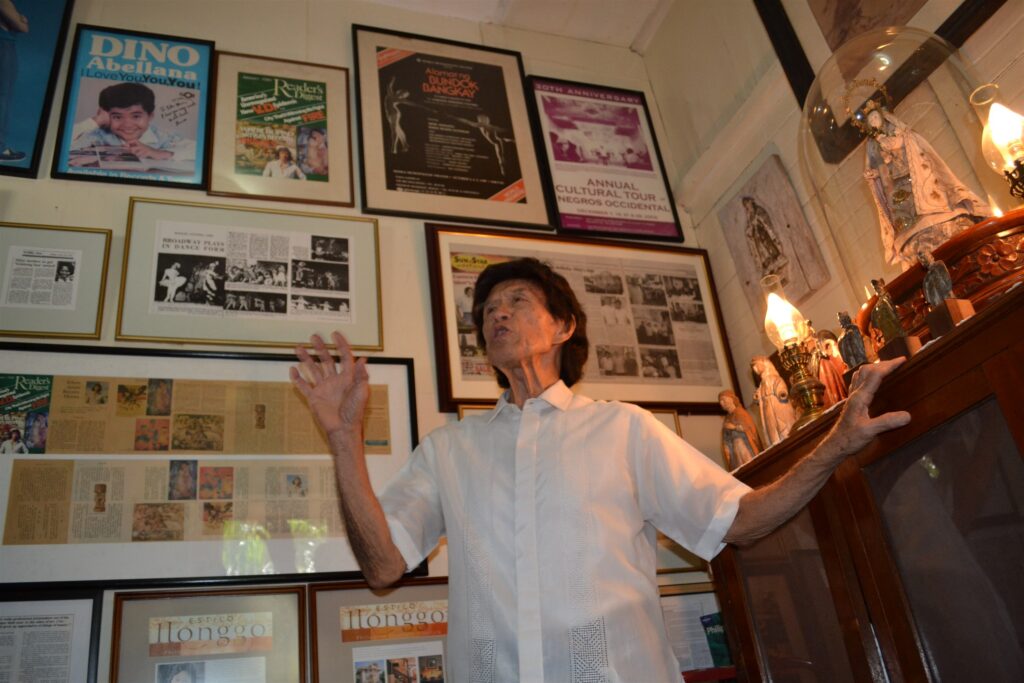
Hofileña also serves as the guide. It was his love and passion for the arts, culture, history, and heritage that prompted him to open his family home to the public in 1962. He loves to tell stories of the glorious past of the house that was built in 1934. He tells you the memories that go with each piece of furniture and fixtures in the house — all precious antiques. There are different mementos, all sorts from books to key chains. He has a copy of the newspaper when then-President Ferdinand Marcos declared Martial Law.
The second floor is even more impressive — it has the paintings of Juan Luna, Leonardo Hidalgo, Fernando Amorsolo, Vicente Manansala, and even a sketch done by the young Jose Rizal as well as a painting by Francisco Goya and Pablo Picasso.
Our next stopover was the mini Silay Museum in front of the Silay Tourism Office at Sen. Jose C. Locsin Cultural and Civic Center. Here, you will dioramas — inspired by the Ayala Museum — on Silay cultural history: the founding of Silay, the role of sugar industry and religion in shaping the city’s destiny, the struggle for freedom, the birth of the “Paris of Negros,” the havoc brought by World War II, and finally the cityhood of Silay.
The museum also displays photographs of ancestral houses of the city, the complete display of the paintings on the life of Dr. Jose Rizal, the vestments of Father Eusebio Locsin, and precious documents and articles from the San Diego Pro-Cathedral and the Diocese of Bacolod.
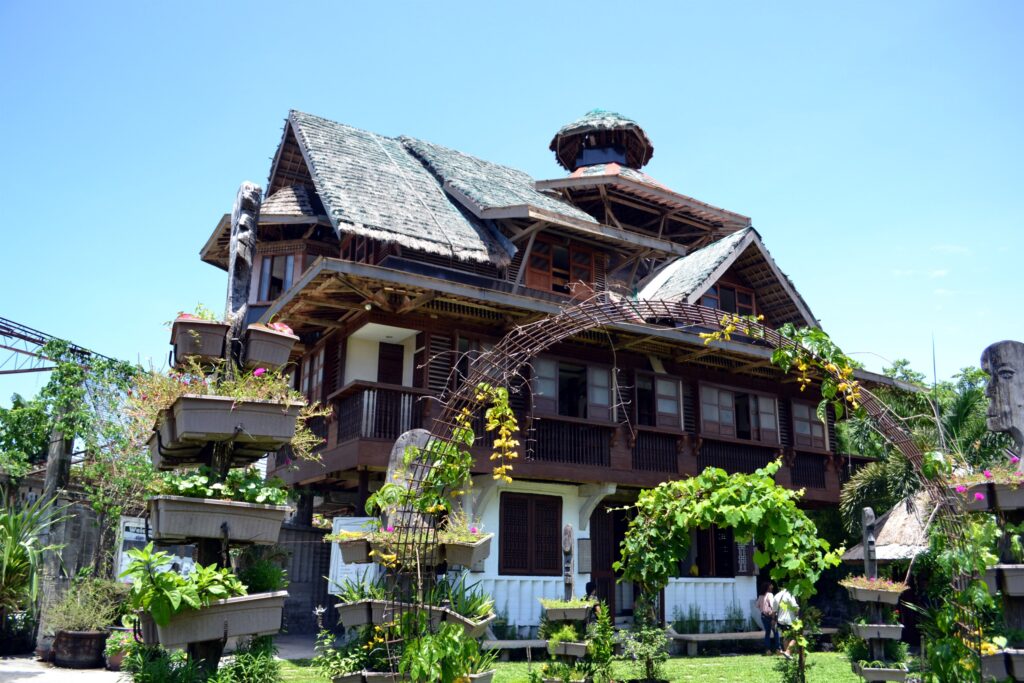
From there, we went to Peñalosa Farm in Victorias City, where we had our lunch. From a swamp where mechanics dumped trash over a decade ago, it is now a prominent fixture in the Negros agricultural landscape.
The farm operates under the strict supervision of agripreneur Ramon Dayrit Peñalosa, who believes that by practicing zero waste management, intercropping, and vermicomposting, many things can be achieved. However, probiotics-based swine production is the anchor of the family-owned farm.
He earned the moniker “Mr. Organic” for a reason. After all, his concept of business opportunities goes this way: “farm to market, farm to kitchen, and farm to plate.” The latter is very important, he said, because it is at this stage that he earns triple.
As we were already full from the organic foods we ate, we were now ready to hit the road again. We went to Victorias Milling Company, where St. Joseph the Worker Chapel was built. However, it is popularly known as the Church of the Angry Christ as it has the image of Jesus Christ with a fierce expression in its very famous mural. Actually, the description was written by a foreign journalist who wrote an article that was featured in Life magazine.
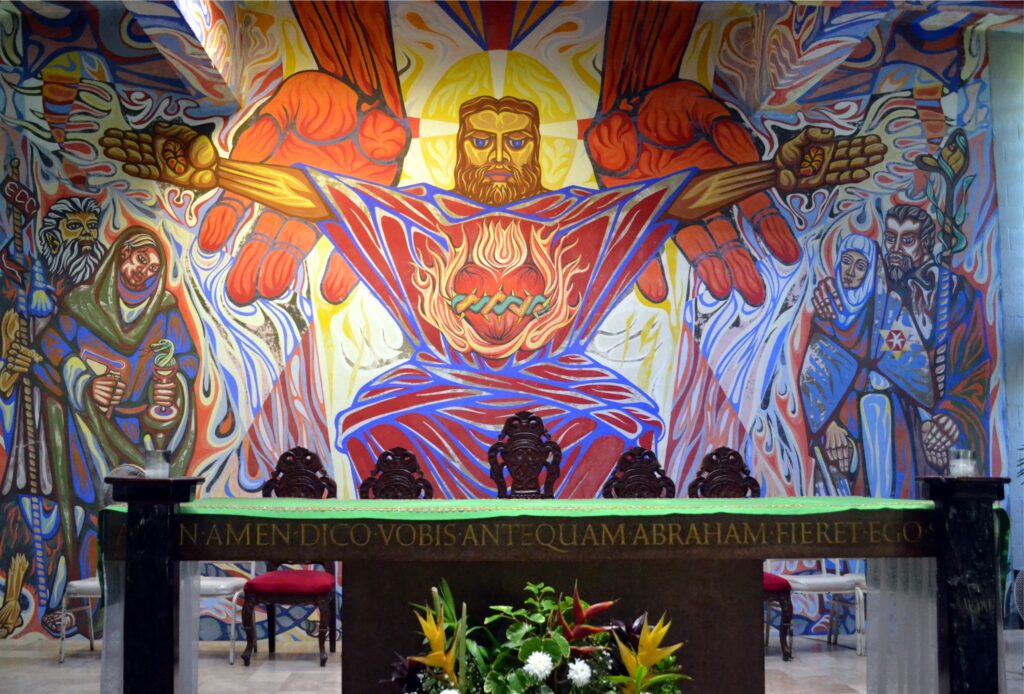
Mural of Angry Christ 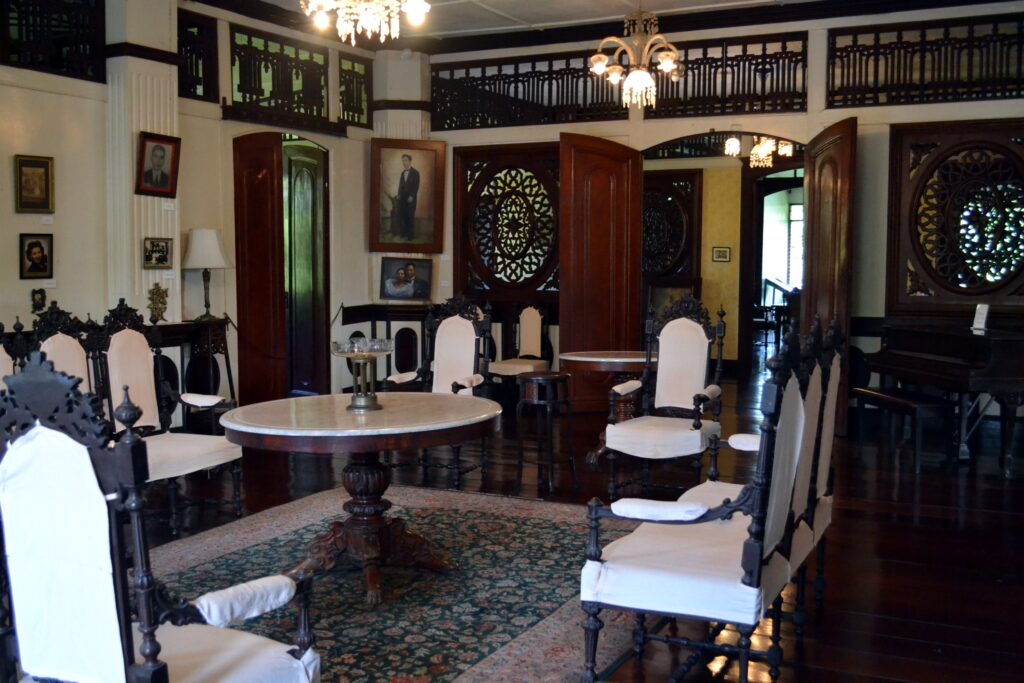
Inside the house of Tana Dicang
Aside from the famous mural, there are several other artworks found in the church. The façade has a mosaic of the wedding of Joseph to Mary. Outside the church, there are paintings on the walls depicting the Prodigal Son. The back of the church featured the Last Supper and the Virgin Mary with the Holy Spirit.
After taking some photos, we drove to the heart of Talisay City, where we went to Balay ni Tana Dicang. Constructed on a 6,000-square-meter lot along Rizal Street, it was built in 1880 in the Spanish-Filipino style of domestic architecture. This “bahay na bato” (literally means “house of stone”) is a two-story building with wooden legs and a stone skirt around the lower area of the house.
Tana Dicang, as Enrica Labayen Alunan was known, buried her silver, porcelain, crystal, and other precious belongings to keep her valuable safe during the Japanese war. Today, these are displayed all over the house, which is still surrounded by the original wrought iron fence and window gratings.
What caught our attention was the bedroom with a bathtub that was specially built for President Manuel L. Quezon during his stay in the house. Other presidents who visited the place were Sergio Osmeña and Carlos Garcia.
It was almost four in the afternoon when we left Balay ni Tana Dicang. It was good that our next stopover, The Ruins, was just 15 minutes away from the heart of the city. Actually, it was a former mansion of sugar baron Mariano Ledesma Lacson, who built it for his inamorata, Maria Braga.
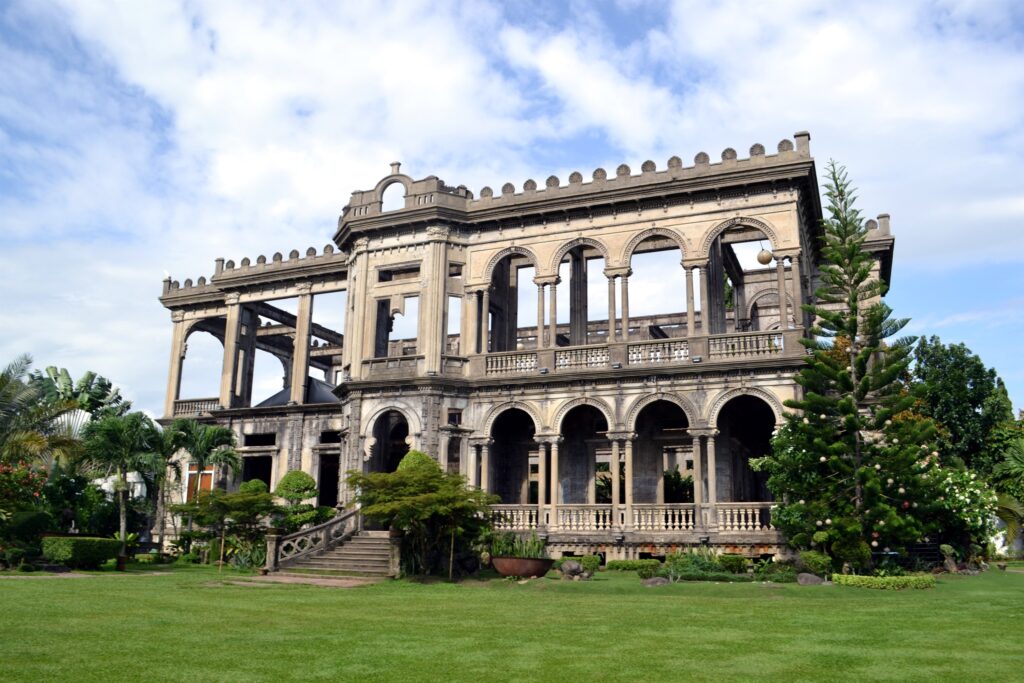
It took three years to build the mansion, whose construction workers came from China. Situated amid a sugarcane plantation, the structure survived when it was burned by guerillas to prevent the Japanese forces from occupying it. It survived because of the oversized steel bars and solid concrete mixture of cement, sand, and gravel that were used during its construction.
It was already getting dark, so we decided to hit the road again and go to Campuestohan Highland Resort, where we were billeted. Established by Ricardo “Cano” Tan, it was designed to be a safe refuge for his family whenever they wanted to get away from the madding crowd.
Today, it is one of the most often-visited tourist destinations in Talisay City. What makes the resort engrossing — aside from the log cabins which look like those in the United States — are the life-size figures of movie icons such as dinosaurs (Jurassic Park), giant gorilla (King Kong), alien cyborgs (Predator), superheroes (from Superman to Spiderman, from Captain America to Batman), and many more. These are scattered all over the resort.
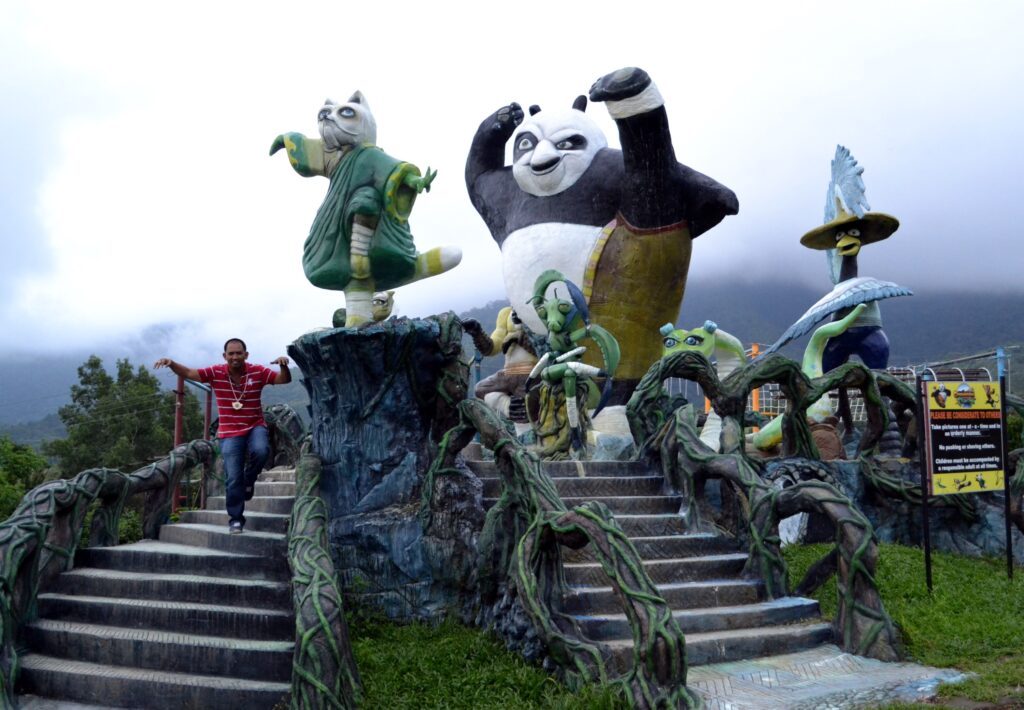
Also interesting are the Bonita Huts, a series of detached overnight accommodations which look like the abodes of Hobbits of the Kingdoms of Middle Earth as featured in The Lord of the Ring series.
Since the night has already engulfed the whole place, we went to the dining area to eat our dinner. Although we were tired, we had fun sharing our experiences during our tour. We laughed and exchanged notes and experiences.
By the time it was 9 o’clock, we had gone to our respective rooms. There was an air-con, but the room was cooler than I thought. I hit the bed, and it was a matter of time that I went to sleep.

